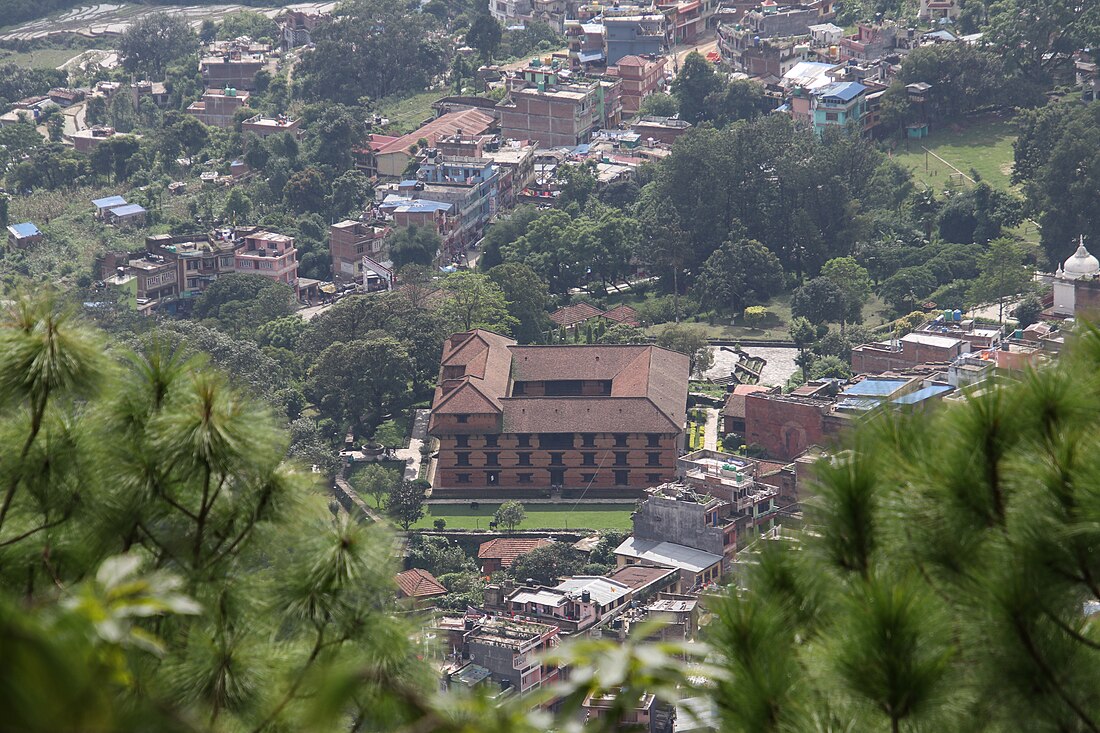Top Qs
Timeline
Chat
Perspective
Gorkha District
District in Gandaki Province, Nepal From Wikipedia, the free encyclopedia
Remove ads
Gorkha District (Nepali: गोरखा pronounced [ɡoɾkʰaː] ⓘ), a part of Gandaki Province, is one of seventy-seven districts of Nepal, and the fourth largest district of the country in terms of area. It is historically linked with the creation of modern Nepal and the name of the legendary Gorkha soldiers. The district, with Gorkha Municipality (previously known as Prithvi Narayan Municipality) as its district headquarters, covers an area of 3,610 km2 (1,390 sq mi) and has a population of 252,201, according to the 2021 Nepal census. Gorkha district is the site of the Manakamana Temple,[1] as well as Gorakhnath and Gorakh Kali temples. Several major rivers—including the Chepe, Daraudi, Marsyangdi, Budi Gandaki, and Trishuli—run through the district.
Remove ads
Origin of the name
Myth holds that a saint named Gorakhnath appeared for the first time in Nepal in Gorkha. There remains a cave with his paduka ('footprint') and a likeness which supports the myth. As the city was established in the place where Sage Gorakhnath appeared, it was named Gorkha.[citation needed]
Geography and climate
Mountains
- Manaslu (8,163 m)
- Himalchuli (7,895 m)
- Shringi Himal (7,177 m)
- Buddha Himal (6,674 m)
- Ganesh Himal (7,422 m)
- Ngadi Chuli (7,871 m)
- Nar Phu : Peri Range (5,748 m)
- Ganesh VI : Ganesh Himal range (6,480 m)
- Tobsar Peak : Shringi Himal range (6,100m)
Remove ads
Transport
Gorkha town has daily bus services to and from Kathmandu (four or five hrs) and Pokhara (three hours).[5]
Demographics
Summarize
Perspective
At the time of the 2021 Nepal census, Gorkha District had a population of 251,027. 8.04% of the population is under 5 years of age. It has a literacy rate of 72.59% and a sex ratio of 1040 females per 1000 males. 89877 (35.80%) lived in municipalities.[7]
Castes/ethnic groups in Gorkha district (2021)[8]
Hill Janjatis are the largest group, making up nearly 50% of the population. Of these the Gurung are the largest group, but there are also Magars, Tamang, Kumal and in the far north Tibetan ethnicities like the Ghale and Chumanubri. Khas are the second-largest group, making up 41% of the population. Newars are 7% of the population. Unlike other hill areas of Nepal Muslims live in this district, mainly in Gorkha municipality.[8]
At the time of the 2021 census, 67.37% of the population spoke Nepali, 16.04% Gurung, 5.41% Magar, 2.67% Tamang, 2.22% Ghale, 1.61% Chum/Nubri, 1.07% Nepal Bhasha and 0.95% Chepang as their first language.[9] In 2011, 73.0% of the population spoke Nepali as their first language.[10]
Remove ads
Health care

Following is the data obtained from the PHASE Nepal website:
- Central/regional/zonal hospitals: 0
- District hospitals: 2
- Primary healthcare centres: 3
- Health posts: 10
- Sub-health post: 55
- Number of doctors: 8
A district hospital is in Gorkha, the municipal hospital in Amppipal is supported by a German NGO.
The small health centers in many village development committees (VDCs) are without Auxiliary Health Workers (AHWs), Auxiliary Nurse Midwives (ANMs) and Community Health Workers (CHWs). So, people seeking emergency health assistance have to travel a long distance to the district headquarters or Kathmandu or end up dying because of lack of treatment. Many people still believe in Dhami and Jhakri and are against taking medicine or going to the hospital for the treatment. An NGO, PHASE Nepal provides many health care facilities and training programs to three VDCs: Sirdibas, Bihi/Prok and Chumchet. Many people residing in these VDCs have benefited from the program.[12]
Remove ads
Educational status

As per the National Population and Housing Census of Nepal 2011, the literacy rate of Gorkha is 66.34%. The female literacy rate is 59.44% and the male literacy rate is 75.09%.
Remove ads
Administration
Summarize
Perspective
The district consists of 11 Municipalities, out of which two are urban municipalities and nine are rural municipalities. These are as follows:[13]
- Gorkha Municipality
- Palungtar Municipality
- Barpak Sulikot Rural Municipality
- Siranchowk Rural Municipality
- Ajirkot Rural Municipality
- Tsum Nubri Rural Municipality
- Dharche Rural Municipality
- Bhimsen Thapa Rural Municipality
- Sahid Lakhan Rural Municipality
- Aarughat Rural Municipality
- Gandaki Rural Municipality
Former Village Development Committees
Prior to the restructuring of the district, Gorkha District consisted of the following municipalities and Village development committees:

- Aanppipal
- Aaru Arbang
- Aaru Chanuate
- Aarupokhari
- Asrang
- Baguwa
- Bakrang
- Bhirkot
- Bhumlichok
- Bihi
- Borlang
- Barpak
- Bunkot
- Chhaikampar
- Chhoprak
- Chumchet
- Chyangli
- Darbhung
- Deurali
- Dhawa
- Dhuwakot
- Gaikhur
- Gakhu
- Ghairung
- Ghyachok
- Ghyalchok
- Gorakhkali
- Gorkha Municipality
- Gumda
- Hansapur
- Harmi
- Jaubari
- Kashigaun
- Kerabari
- Kerauja
- Kharibot
- Khoplang
- Laprak
- Lapu
- Lho
- Makaising
- Manakamana
- Manbu
- Masel
- Mirkot
- Muchhok
- Namjung
- Nareshwar
- Palungtar Municipality
- Panchkhuwadeurali
- Pandrung
- Phinam
- Phujel
- Prok
- Ranishwara
- Samagaun
- Saurpani
- Srinathkot
- Simjung
- Sirdibas
- Swara
- Taklung
- Takukot
- Takumajhalakuribot
- Tandrang
- Tanglichok
- Taple
- Tara Nagar
- Thalajung
- Thumi
- Uiya
- Barpak
Remove ads
See also
References
External links
Wikiwand - on
Seamless Wikipedia browsing. On steroids.
Remove ads



